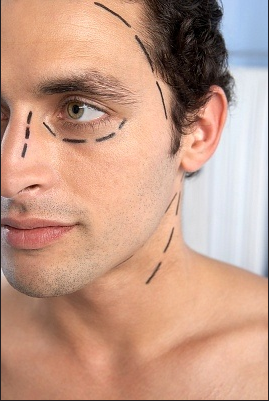Rhinoplasty

Synonymous to : Nose Augmentation, Nose Lift, Alar Trimming, Tip Plasty, Nose Job, Reduction Rhinoplasty, Nasal Reshaping
Rhinoplasty, or cosmetic nose procedure, enhances the features and contour of the nose. Each individual has different nasal features. The nose of each patient requesting rhinoplasty surgery has specific characteristics that are influenced by and dependent on racial origin. For example, Caucasians often have a high bony bridge that may be accompanied by a dorsal hump, crooked bony bridge, and drooping nasal tip. Asians, on the other hand, often have a low bony bridge, round or bulbous nasal tip, and wide and flaring alar base with overhang of the alar rim. These give a strong facial feature and explain why most Asians have a more masculine nasal profile.
These less pleasing features of the nose may affect the self-esteem of some patients and the way other people look, appreciate, and accept them. This can be corrected and enhanced by a rhinoplasty procedure. Rhinoplasty is not a single standardized procedure for all patients requesting aesthetic improvement of the nose area. There are several procedures that can enhance the features of the nose. They include infracture rhinoplasty, reduction rhinoplasty, tip plasty, augmentation rhinoplasty, and alar trimming. This can be performed alone or combined together to satisfy the needs of the patient.
To better evaluate the nose, it is divided into three general parts or regions: the nasal dorsum or bony bridge, the nasal tip, and the ala or alar lobule. The type of cosmetic nose enhancement procedure that a patient will need varies and depends on the area of the nose that is of great concern to the patient. For Caucasians that have a dorsal hump or crooked nasal dorsum, they would need infracture rhinoplasty to straighten and smoothen the bridge of their nose. A drooping nasal tip, on the other hand, will need a tip plasty to increase tip projection.
For Asians, rhinoplasty is a more challenging procedure. There are numerous features of the Asian nose that may need correction or enhancement with rhinoplasty. Very common among Asians is a low nasal bridge due to a less prominent or not fully developed nasal bone. This can be enhanced through augmentation rhinoplasty. This is performed by inserting a nasal implant, either silicone or gortex, through an incision inside the nose. The nasal implant is inserted into a pocket created under the skin and on top of the bony bridge. This will increase the height of the bony bridge or dorsum of the nose.
A round or bulbous nasal tip, another common feature of the Asian nose, is due to a well-developed and large cartilage at the nasal tip. This cartilage widens the tip of the nose and makes it less defined. This is corrected through a tip plasty procedure that excises the excess cartilage at the tip of the nose to narrow it down and give it more definition. Tip plasty also increases the projection of the nasal tip, something much needed in an Asian nose which is usually deficient in height at the nasal tip.
For the alar region of the nose, the ideal width of the alar base should not go beyond the medial end of the eyes. For a nose to be aesthetically appealing, the collumela should be exposed and not covered by an overhanging alar rim when viewed from the side. It is very common among Asians to have a thick and overhanging alar rim with a wide and flaring alar base. This can be enhanced by alar trimming surgery, a procedure that narrows down the alar width of the nose and removes the excess or overhanging alar rim, thus exposing the collumela. Nasal implants are made from soft yet solid material. These can be in many forms and compositions, i.e., silicone block, gortex, medpore, etc. These implants are bio-compatible, do not cause toxic reaction to the body, can be sterilized, and their shape can be contoured and removed when needed. Silicone oil, used in the past for injection to augment the bridge of the nose, is different from silicone implants. Silicone oil is liquid in form and had been associated with many complications such as infection, extrusion, inflammation, and contour deformity. Results with silicone oil injection are very unpredictable, and the rate of complications is very high. This is the reason why most trained cosmetic surgeons don’t perform the procedure.
As earlier mentioned, rhinoplasty is not a single standard procedure that could address all the features or needs of an Asian or Caucasian nose. There are several types of rhinoplasty procedures, and it will be difficult for the cosmetic surgeon to recommend what procedure will best suit a particular patient without doing a thorough physical examination. It is best that a patient should visit a cosmetic surgeon to know all the options.
Rhinoplasty patients need to prepare prior to surgery. For two to three weeks, they are required to avoid smoking, alcoholic beverages, aspirin, steroids, NSAID’s, pain medications like mefenamic acid and naproxen, vitamin E supplements, herbal tea and herbal medications, and blood-thinning medications like coumadin and heparin. Said medications and social activities will make patients bleed a lot during surgery and delay their healing. Patients must be of good health to be a good candidate for surgery. Patients with any medical illness like asthma, allergies, hypertension, bleeding disorder, emphysema, and poor wound healing will require further treatment prior to surgery. This is best discussed with your cosmetic surgeon.
The rhinoplasty procedure is commonly performed under local anesthesia in a doctor’s office or out-patient surgical facility that is accredited by the local health department. Patients who are agitated before the procedure may request sedation for more comfort and relaxation during surgery. Patients may be required to wear a splint in the form of tapes or plaster of paris on the nose for approximately a week or longer depending on the type or extent of operation and the surgeon’s preference. Some bruising and swelling should be expected on the first two to three days after the procedure, but they will subside after one to two weeks. The patient’s nose is usually socially presentable by the seventh to tenth day. It may take several months for the nose to fully settle, so it takes time before you may appreciate the full effect of the procedure. Sutures are usually removed on the third to fourth day after surgery.
For the rhinoplasty procedure, patients are advised to allot eight to ten days. This period of time is enough for consultation, laboratory, surgery, follow-up, suture removal, and recuperation. After these, patients are safe to travel back home or work since all of the wounds are dry and healed.
Possible risks and complications:
- Infection
- Poor wound healing
- Anesthesia risks
- Bleeding (hematoma)
- Nose asymmetry
- Cardiac and pulmonary complications can occur in longer surgical procedures and may be associated with the formation of, or increase in, blood clots in the venous system
- Change in skin sensation (numbness)
- Nasal airway alterations may occur after a rhinoplasty or septoplasty that may interfere with normal passage of air through the nose
- Nasal septal perforation (a hole in the nasal septum) may develop but is rare; additional surgical treatment may be necessary to repair the nasal septum, but it may be impossible to correct this complication in some cases
- Pain, which may persist
- Unfavorable scarring
- Skin contour irregularities
- Skin discoloration and swelling
- Skin perforation by nasal implant or implant extrusion
- Sutures may spontaneously surface through the skin, become visible, or produce irritation that requires removal
- Possibility of revision surgery

